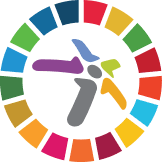Statement on behalf of the Gender Advisory Board to the UN Commission on Science Technology and Development (CSTD)
Caitlin Kraft-Buchman, CEO, Women At The Table
8 April 2025

Technology Foresight, Technology Assessment, and AI Through a Gender Lens
Thank you for this opportunity to address the Commission. As Co-Chair of the CSTD Gender Advisory Board, we commend the Secretary-General’s report on technology foresight and technology assessment for sustainable development. The report rightly positions these methodologies as “honest brokers” that help reveal blind spots in our technological trajectories. However, a significant blind spot persists – the systematic exclusion of gender-responsive approaches in these very methodologies.
The Critical Gender Gap in Strategic Intelligence
The UNESCO Science Report (2021) documents that women constitute only 33.3% of researchers globally, but in technology foresight initiatives, this drops to just 21% of participants, with women from developing countries accounting for less than 7%. This isn’t merely a representation issue – it fundamentally compromises what the Secretary-General’s report calls the capacity to “challenge existing policy narratives.”
Concrete Methods for Gender-Responsive Assessment in Developing Countries
The Secretary-General’s report emphasizes building “local capacities and institutional frameworks.” Three proven methods demonstrate how developing countries can implement gender-responsive technology assessment:
- Community-Based Assessment Protocols: In Rwanda, technology assessment that included equal representation of women farmers in evaluation committees led to irrigation technologies that reduced water usage by 28% while increasing women’s agricultural productivity by 33% (FAO, 2022). This approach directly addresses what the Secretary-General’s report calls “adapting technology assessment to national contexts.”
- Gender-Disaggregated Baseline Studies: The UNIDO Technology Assessment Project in Southeast Asia showed that requiring baseline technology studies to include gender-disaggregated data increased identification of technology barriers by 42% and led to more effective policy recommendations (UNIDO, 2023).
- Local Knowledge Integration: In India, the Technology Information Forecasting and Assessment Council’s inclusive methodology for assessing telemedicine technologies identified 38% more implementation barriers and opportunities by systematically incorporating women’s health workers’ experiences (TIFAC, 2023).
Evidence of Superior Outcomes in Developing Economies
Gender-responsive technology assessment in developing countries delivers measurable impacts:
In Colombia, mobile banking platforms assessed using gender-responsive methodologies increased women’s adoption rates by 42% compared to platforms evaluated through conventional methods (GSMA, 2022).
In Kenya, technology assessments with gender-balanced participation identified 26% more potential socioeconomic effects than those with homogeneous participant groups, leading to more effective solar technology deployment (IRENA, 2023)
In Vietnam, AI applications in agriculture that underwent gender-responsive assessment reached 47% more female farmers and increased their productivity by 36% compared to applications that did not (ADB, 2023).
Specific Implementation Steps for Developing Countries
To operationalize gender-responsive technology assessment and foresight in developing countries, the evidence points to these implementation steps:
- Establish Gender-Balanced Assessment Teams: Require minimum 40% representation of women in technology assessment committees, with specific quotas for women from underrepresented communities.
- Implement Mandatory Gender Impact Analyses: Require all technology assessments to include specific analysis of differential impacts on women and men, particularly for technologies that affect economic participation.
- Create Gender Data Collection Protocols: Develop standardized methods for collecting gender-disaggregated data in technology diffusion studies, addressing the critical data gaps identified in 84% of developing countries (ITU, 2023).
- Build Local Gender Assessment Capacity: Train government officials, researchers, and civil society representatives in gender-responsive technology assessment methodologies through regional centers of excellence.
In addition, the 2025 UNCTAD Tech & Innov report identifies infrastructure, data, and skills as the three critical leverage points for AI in particular. When viewed through a gender lens, these each also reveal systematic gaps.
Recommendations for the Commission
In line with the Secretary-General’s report, we encourage the Commission to consider the following actions:
- Establish a dedicated Gender Action Line within the CSTD framework that specifically addresses technology assessment in developing countries
- Create a peer-learning network for gender-responsive technology assessment among developing countries, supporting the knowledge-sharing networks recommended in the report.
- Develop specific funding mechanisms to support gender-responsive technology assessment initiatives in least developed countries
- Mandate regular reporting on gender balance in all technology assessment and foresight activities supported by UN agencies
Conclusion: The Scientific Rationale
The empirical evidence demonstrates that gender-responsive approaches to technology assessment and foresight are not peripheral considerations but core methodological requirements for accuracy, validity, and effectiveness.
When the report describes technology assessment and foresight as “complementary tools in addressing technological and societal challenges,” the data strongly indicates that gender-responsive methodologies are essential for these tools to function as intended. The evidence suggests that integrating these approaches would strengthen the analytical rigor of technology assessment and foresight, enhancing their value as inputs to evidence-based policymaking.
Building on the report’s excellent recommendations, we suggest that the integration of gender-responsive methodologies represents a significant opportunity to enhance the scientific validity and predictive accuracy of technology assessment and foresight practices globally.
Thank you.
